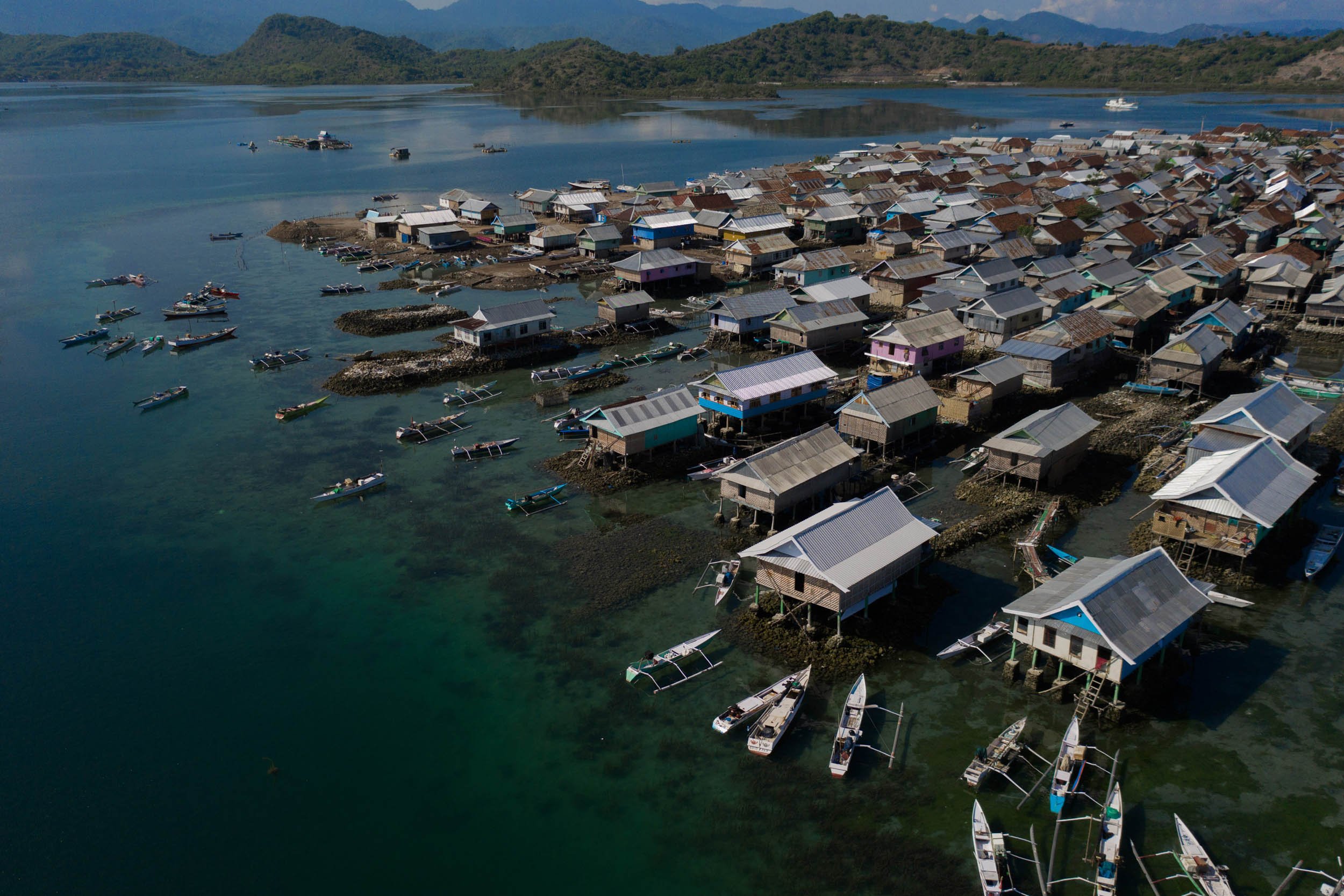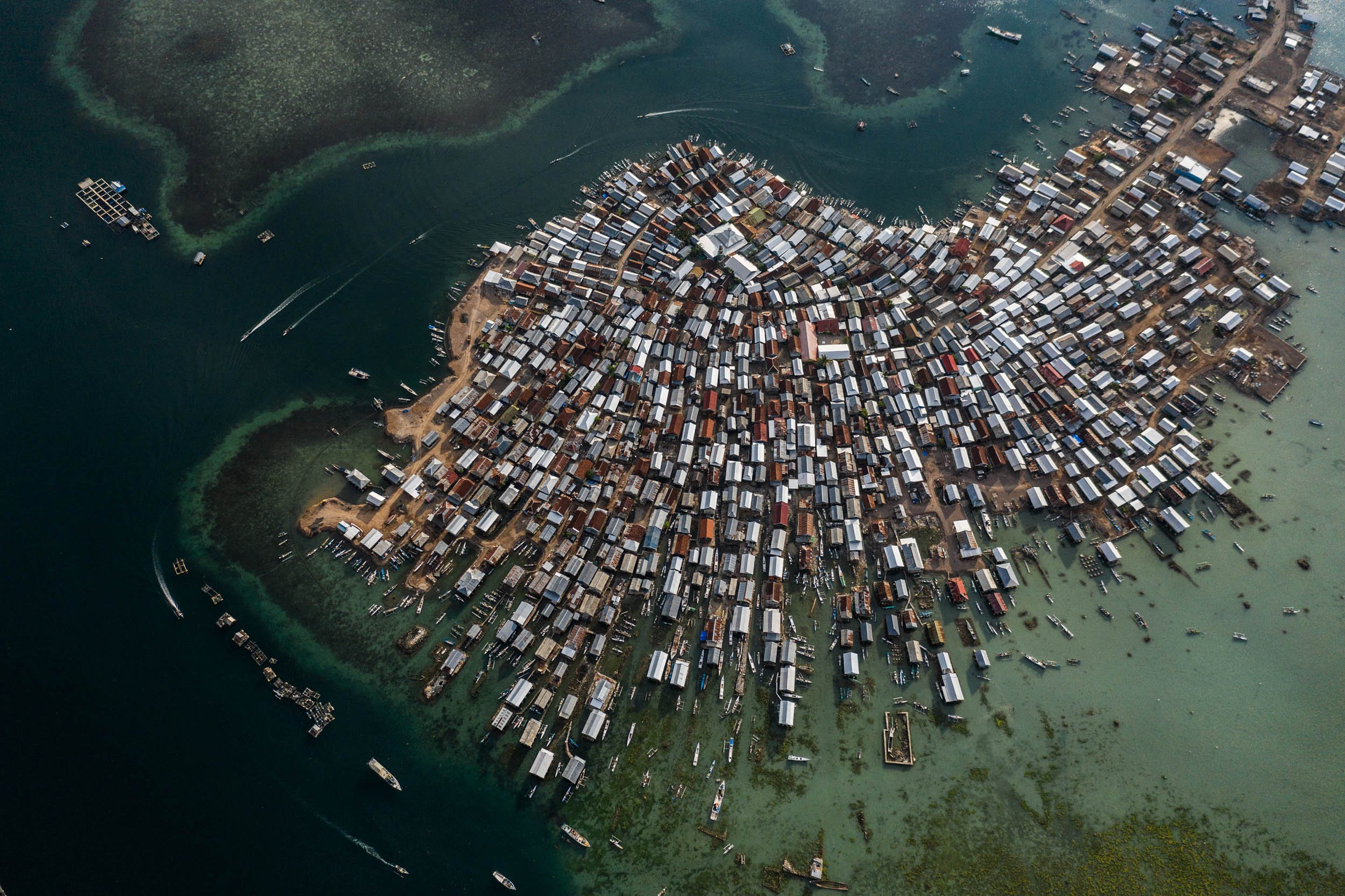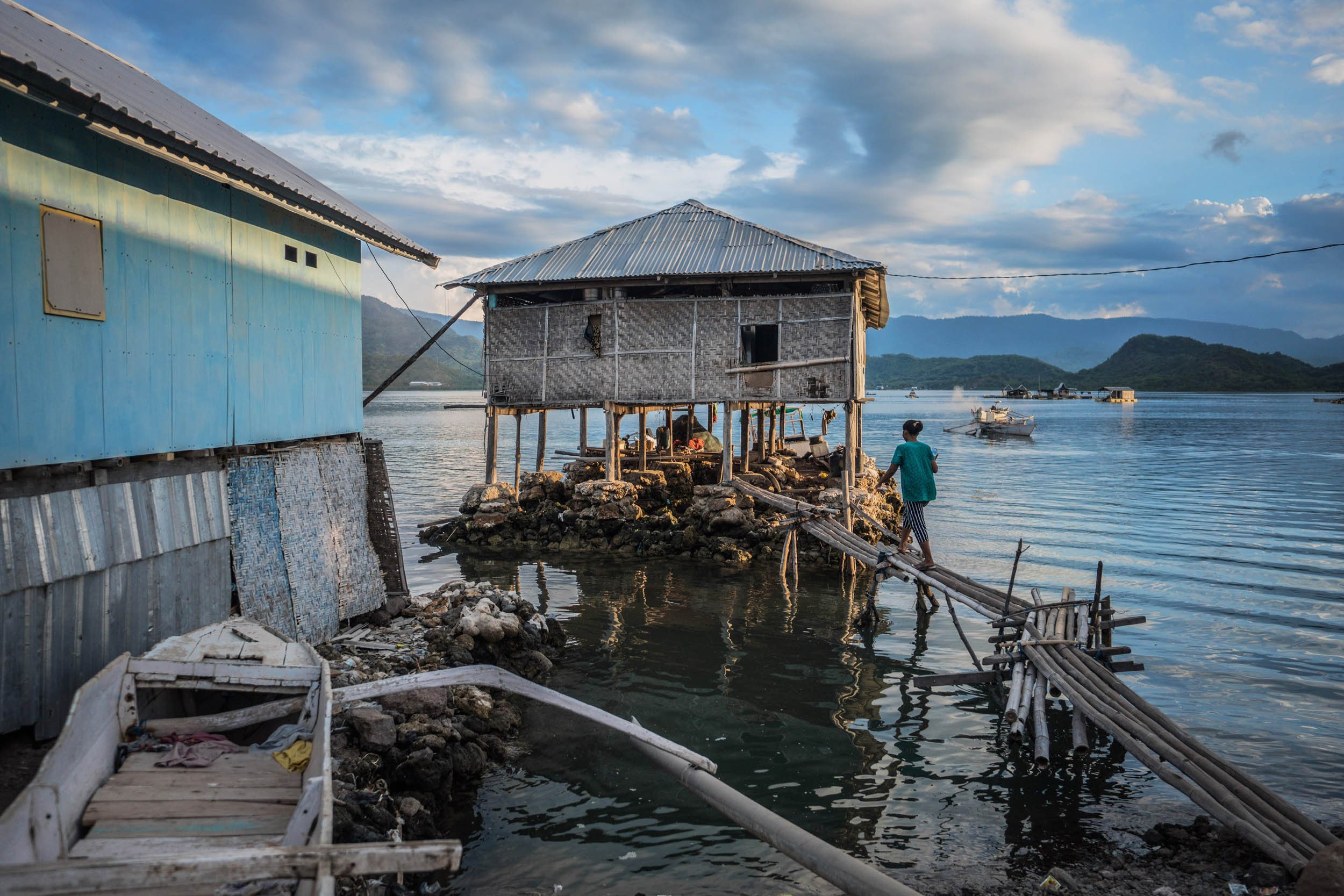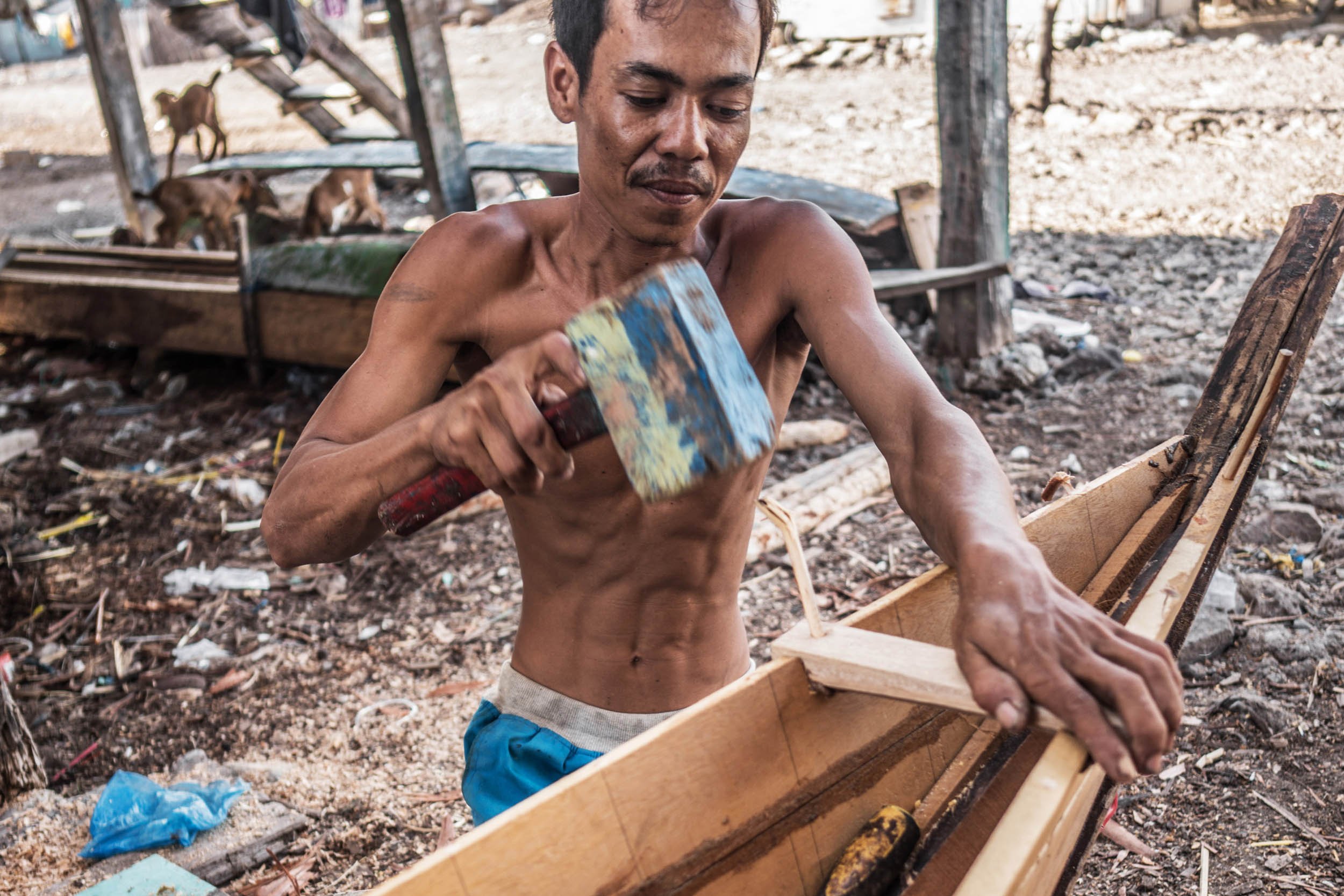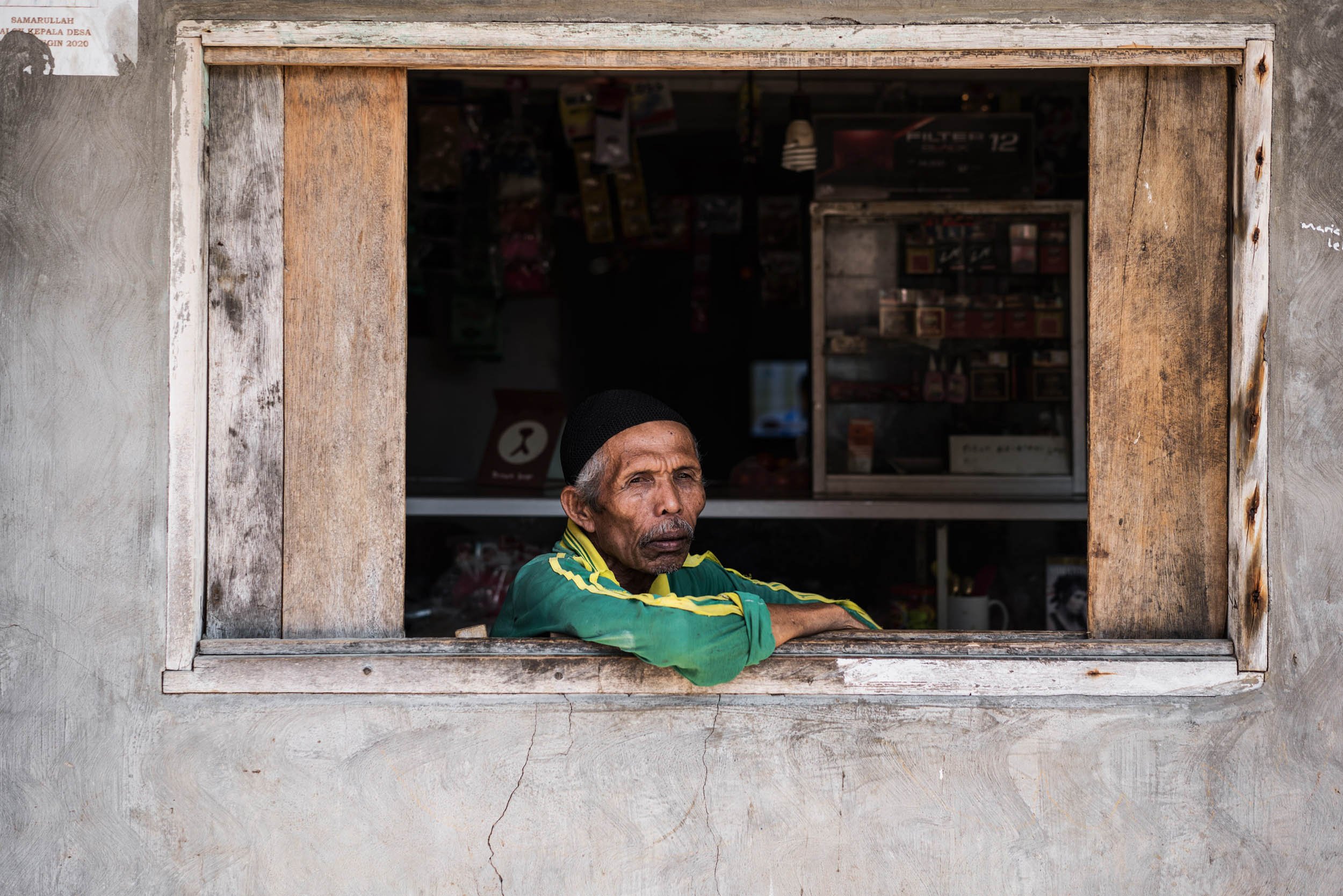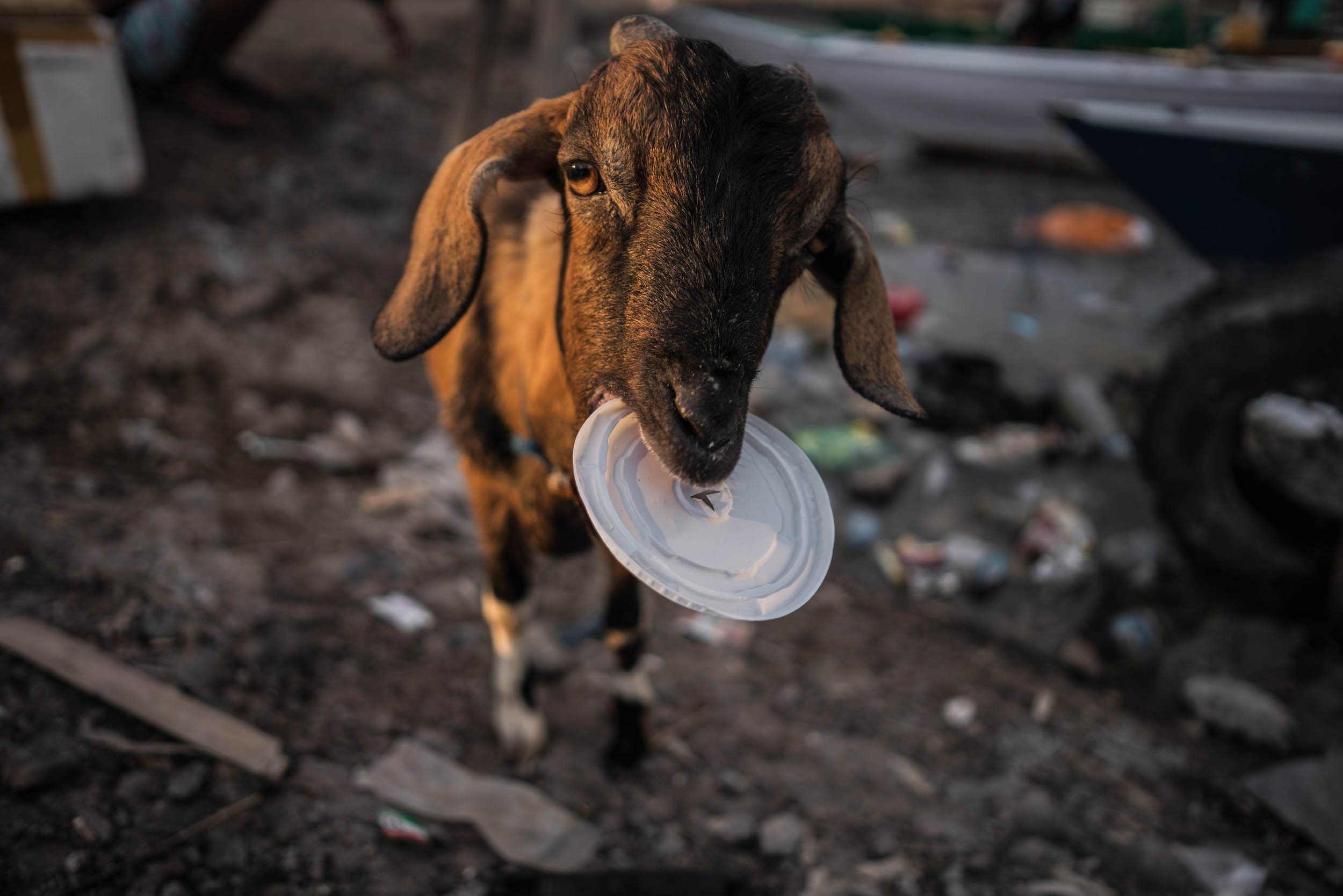The Ever-Growing Island Bungin
With 3000 people living on nine hectares, Bungin in Indonesia is one of the most densely populated islands in the world. With no greenery to speak of, its goats live on plastic trash.
I lay in bed, weakened by fever, in a small wooden hut somewhere in Indonesia. Despite the delirium, my spirit of discovery was still intact, and I despised the idea of just lying about uselessly. So I grabbed my smartphone and started exploring satellite maps of nearby islands, hoping to find a new and unusual location. I flew my fingers over countless aquacultures, volcanic craters, and rice patties. Suddenly, I spotted something. I had found my next destination.
A few days later, I arrived on the small island of Bungin just off the northwest coast of Sumbawa.
According to my research, some 3500 inhabitants lived on only six hectares of land at the turn of the millennium. It is one of the most densely populated places on the planet. Where do you begin to explore when you don’t know anyone? Out of respect for the local inhabitants, I immediately searched for the village leader before I even thought of pulling out my camera. A little later, I was sitting in the hut of an old man named Makadia. His face was wrinkled, and he had a thin mustache. He smiled, as did I. And neither of us understood a word of what the other said. His son Arif was found in the village, and he was able to translate my request. Makadia told me of the origins of this unusual place.
The islanders of Bungin belong almost exclusively to the Bajau tribe, a renowned seafaring people from South Sulawesi, he said. Some six generations ago, a group of warriors fleeing from a conqueror settled on the island. At the time, they found only a tiny piece of white sandy beach that had formed on a coral reef lying in the sea. But they loved the proximity to the sea and the security that this isolated location afforded them. So they built their first huts on the reef and made the island their home.
As space was and still is a rare commodity, local tradition requires that all who wish to marry and raise a family first build their own house. This is not so simple if you consider that the indigenous population of Bungin rarely emigrates, and there is simply no more land to distribute on the island. Consequently, every man intending to marry must harvest coral from the waters and pile it up on low-lying sections of the surrounding reef until enough new land is reclaimed from the sea to build the future home. As a result, the island is constantly growing.
With the blessing of Makadia, I could finally begin to explore Bungin Island. Arif would be relieved of his tasks for a day and was to accompany me.
Most of the island dwellers work as fishermen or raise goats. The latter activity puzzled me, as I couldn’t see any vegetation to speak of. Arif had an answer that completely baffled me. The local goats had developed the unique habit of eating plastic and paper. This couldn’t be true, I thought. But, yes, it was. While taking an afternoon break in the shade of the houses, I did observe goats eating plastic. This remains a mystery to me to this day.
While elderly women were trying to harvest mussles and catch other sea creatures in the shallow waters, Arif led me along small paths and over wooden bridges to make the acquaintance of his friend, a young and wiry boat builder. The Bajau love the sea. It’s their home. And so, over the centuries, they have perfected the art of shipbuilding. With great patience and skill, the young man fitted the wood together so seamlessly that no nails or screws were needed. They would rust immediately anyhow and make the boat leak.
I continued walking from house to house. They are all built on stilts to not be damaged by the high tide. Passing by blowfish drying in the sun and children playing. A fisherman was repairing his nets for the next catch while his wife prepared the stockfish for the market. People lead a simple life here, but they seem content. Yet, progress is visible here too. In the expectation of government support, the island’s inhabitants built a bridge connecting Bungin with the larger island of Sumbawa. Now, the two bodies are accessible by land. As local traditions slowly disappear, Bungin is still getting larger, said Arif, with truckload after truckload crossing the bridge. He then took out a bottle of water and offered me some to drink. We sat in the shade, watching the goats eating plastic. What a place!
Editor’s note: We realize that you, our readers, may be concerned (as we are) for the health and well-being of the plastic-eating goats in this story. This sad phenomenon is becoming increasingly common in many parts of the world, including Europe and the United States. While animal welfare organizations warn that animals die prematurely from eating plastic, the goats on Bungin seem to have adapted to the circumstances; at least, they are generally reproducing. At what cost, of course, is uncertain.
Die wachsende Insel Bungin
Mit ca. 3000 Einwohnern auf neun Hektar zählt die indonesische Insel Bungin zu einem der am dichtesten besiedelten Orte der Welt – und er wächst immer weiter. Dieser Fleck ist so eng bebaut, dass es keine Vegetation gibt. Die Ziegen fressen Plastik.
Eines Tages lag ich irgendwo in Indonesien geschwächt mit Fieber im Bett einer kleinen Holzhütte. Mein Entdeckergeist war aber weiterhin wach und ich sträubte mich dagegen, hier einfach nutzlos herumzuliegen. Kurzerhand sah ich mir auf dem Smartphone die Satellitenkarte von nahe liegenden Inseln an, um einen neuen, außergewöhnlichen Ort zu finden. Ich flog mit meinen Fingern über unzählige Aquakulturen, Vulkankrater und Reisfelder. Aber was war das? Ich hatte mein nächstes Ziel gefunden.
Einige Tage später betrat ich die kleine Insel Bungin vor der Nordwestküste Sumbawas.
Anfang der 2000er-Jahre lebten schätzungsweise 3.500 Einwohner auf gerade mal sechs Hektar Landfläche, so hatte es meine Recherche ergeben. Einer der am dichtesten besiedelten Orte der Welt. Aber wo fängt man an, wenn man niemanden kennt. Aus Respekt vor den Einheimischen begab ich mich direkt auf die Suche nach dem Dorfvorsteher, bevor ich auch nur daran dachte meine Kamera zu zücken. Und wenig später saß ich in der Hütte des alten Mannes Makadia. Sein Gesicht war faltig und er hatte einen dünnen Oberlippenbart. Er lächelte. Ich lächelte. Und keiner von uns verstand ein Wort des anderen. Bis sein Sohn Arif im Dorf zum Übersetzen gefunden war und ich mein Anliegen vortragen konnte. Makadia erzählte mir vom Ursprung dieses so untypischen Ortes.
Die Inselbewohner von Bungin gehören fast ausschließlich dem berühmten Seefahrervolk der Bajau aus Südsulawesi an, sagte er. Eine Gruppe von Kriegern kam vor sechs Generationen auf der Flucht vor einem Eroberer hierher. Damals fanden sie nichts weiter als ein kleines Stück weißen Sandstrand vor, der sich auf einem im Meer liegenden Korallenriff gebildet hatte. Aber sie liebten die Nähe zum Meer und die Sicherheit, die dieser isolierte Ort ihnen bot. So bauten sie die ersten Hütten auf das Riff und machten es zu ihrer Heimat.
Da Platz ein rares Gut war und immer noch ist, verlangt die örtliche Tradition, dass alle, die heiraten und eine Familie gründen wollen, zuvor ihr eigenes Haus bauten. Gar nicht so einfach, wenn man bedenkt, dass die Ureinwohner Bungins selten auswandern, und es auf der Insel kein Land mehr zu verteilen gibt. Und so muss jeder heiratswillige Mann totes Korallengestein aus dem Meer sammeln und es so lange stapeln bis neues Land für das zukünftige Heim gewonnen ist. Infolgedessen wächst die Insel stetig weiter.
Und mit dem Segen von Makadia konnte ich dieses Bungin nun auch endlich erkunden. Arif wurde von seinen Aufgaben für den Tag entbunden und sollte mich begleiten.
Die meisten Inselbewohner arbeiteten als Fischer und züchteten Ziegen. Gerade Letzteres wunderte mich, da es keinen wirklichen Pflanzenbewuchs gab, wohin ich auch schaute. Arif hatte aber eine Antwort parat, die mich mehr als erstaunte: Die Ziegen hier hätten die einzigartige Angewohnheit entwickelt, Plastik und Papier zu essen. Das konnte doch nicht wahr sein? Aber ja, da waren sie. Während die einen ihre Mittagsruhe im Schatten der Häuser verbrachten, aßen andere wirklich Plastik. Ein Rätsel für mich bis zuletzt.
Während ältere Damen im seichten Wasser nach Muscheln und anderen kleinen Meerestieren suchten, führte mich Arif über schmale Wege und Holzbrücken zu einem jungen drahtigen Bootsbauer. Ein Freund von ihm. Die Bajau lieben das Meer. Es ist ihr Zuhause. Und so haben sie die Kunst des Schiffbaus über die Jahrhunderte perfektioniert. Mit viel Geduld und Geschick passte er das Holz so filigran aneinander an, dass es keinen Nagel und keine Schraube benötigte. Diese würden sowieso sofort rosten und das Boot undicht machen.
Weiter ging es von Familie zu Familie. Ein Haus in einer Linie an das andere gereiht. Immer auf Stelzen gebaut, sodass die Flut ihnen nichts anhaben konnte. Vorbei an in der Sonne trocknenden Kugelfischhäuten und spielenden Kindern, traf man immer wieder nach kürzester Zeit aufs Wasser, wo ein Boot neben dem anderen lag. Während einer der Fischer seine Netze für den nächsten Fang reparierte, bereitete seine Frau Stockfisch für den Markt vor. Es war ein einfaches Leben, aber die Menschen wirkten zufrieden. Aber auch hier hatte der Fortschritt seit kurzem Einzug gehalten. In Erwartung staatlicher Unterstützung hatten die Bewohner eine Brücke gebaut, die Bungin mit der größeren Insel Sumbawa verband, und nun auch auf dem Landweg erreichbar geworden war. Während die lokalen Traditionen langsam verschwänden, würde Bungin immer größer, sagte Arif – eine Lkw-Ladung nach der anderen, die die Brücke überquerte. Dann holte er eine Flasche Wasser. Er bot sie mir an, wir setzten uns in den Schatten und beobachteten die Ziegen beim Plastikessen. Was für ein Ort!
